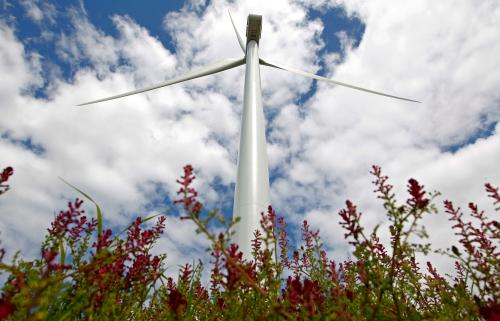INTRODUCTION
We are at a key moment in the evolution of our global approach to the challenges of development, environment and the transition to a green economy. This year marked the 20th anniversary of the U.N. Conference on Environment and Development, also known as the Rio Earth Summit, and the 40th anniversary of the first international meeting to address environment and development in Stockholm. Despite the ambitious and well-intentioned aspirations of these meetings, over 1.3 billion people still do not have access to electricity; 2.5 billion people live without basic sanitation; and 4 billion people live on less than $9 per day. Furthermore, global greenhouse gas (GHG) emissions are likely to exceed the levels that would be needed to maintain the climate at no more than 2 degrees Celsius over pre-industrial levels and some climate impacts are already being felt, with the greatest vulnerabilities in the developing world.
Innovations in green technology represent transformational approaches to these and others of the world’s thorniest development and environment challenges. Innovation for green growth has the potential to tackle three challenges simultaneously: encouraging widespread development and poverty reduction; creating new and more vibrant economies based on clean technologies; and securing an increasingly greener world. Importantly, this kind of transformational approach to addressing global development goals through green technologies will require support for innovation across all development contexts. Establishing a sufficiently large suite of technological options, suitable to all economies and at the urgent pace required, will involve unprecedented innovation activity not only from developed regions, but also from new clusters and enterprises in emerging economies and least developed countries. Encouragingly, widespread economic development has increased global capacity for research and development, and created a new tier of emerging innovators in developing countries—and through additional action, we argue that these gains might be bolstered, and additional innovation areas can be encouraged in new regions.
Tackling such challenges as climate change, energy access, environmental degradation, sanitation and water availability while achieving economic and development goals will require unusually creative approaches. The engagement of global innovative capacity depends on effective national innovation systems, and in many places these could potentially benefit from international coordination and support. It will require new and profitable business models, novel approaches to financing, and policy innovations within our national and global institutions.
In this analysis, we seek to elucidate the areas for new international partnerships or cooperation that could be most effective in this transformation. We do this first by reviewing the components of a successful innovation “ecosystem.” We then present and analyze a large set of existing international initiatives that aim to support green growth, and identify strengths and gaps in the existing infrastructure. We assess the needs and pragmatic constraints on international institutions, and recommend an integrated, four-part approach to spur innovation partnerships in developing countries. We conclude that, by linking national governments, the private sector, and the international community, a collaborative effort can make concrete improvements in four key green innovation areas:
- Cultivating technical knowledge in green technologies;
- Facilitating existing entrepreneurial cultures;
- Providing new models and opportunities for financing and intellectual property sharing; and
- Large scale financing for demonstration and deployment of complex but transformative new technologies.
The Brookings Institution is committed to quality, independence, and impact.
We are supported by a diverse array of funders. In line with our values and policies, each Brookings publication represents the sole views of its author(s).











